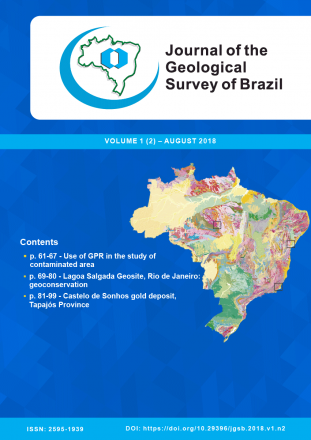The Rio Piranhas-Seridó Domain, Borborema Province, Northeastern Brazil: Review of geological-geochronological data and implications for stratigraphy and crustal evolution
Journal of the Geological Survey of Brazil
The Rio Piranhas-Seridó Domain, Borborema Province, Northeastern Brazil: Review of geological-geochronological data and implications for stratigraphy and crustal evolution
Autor Correspondente: V. C. de Medeiros | [email protected]
Palavras-chave: Rio Piranhas-Seridó Domain, Borborema province, crustal evolution, U-Pb, lithostratigraphy
Resumos Cadastrados
Resumo Inglês:
This paper presents a review of available lithostratigraphic and isotopic data, in addition to other information collected from projects of the Geological Survey of Brazil (SGB-CPRM), for the Rio Piranhas-Seridó Domain (PSD). This domain is one of the tectonostratigraphic compartments of the central-northeast portion of the Borborema Province (Northeast Brazil), bound by the Picuí-João Câmara, Patos and Portalegre shear zones. More recent isotopic determinations (U-Pb dating of zircon) and geological maps (usually on a 1:100000 scale) have clearly detected and/or redefined several units, e.g., the Amarante, Campo Grande, Granjeiro and Saquinho complexes, in addition to the Serra do Ingá body (Archean), Arabia Complex (Siderian), Caicó Complex and Serra da Formiga Suite (Rhyacian), Poço da Cruz Suite (Orosirian-Statherian), Seridó Group (Ediacaran) and Ediacaran to Early-Cambrian magmatic suites, in addition to pegmatites and granitic pegmatites. With respect to the supracrustal rocks of the Seridó Group, the deposition in the Ediacaran is based on field relations and on the ages of detrital zircons, which showed a greater contribution from Mesoarchean to Neoproterozoic sources, the vast majority of which may come from the PSD itself. Current records indicate that the evolution of the PSD started in the Eoarchean, and peaked in the Neoproterozoic with the Brasiliano event, which is characterized by sedimentation of the Seridó Group, intrusion of plutonic bodies, deformation and metamorphism (especially at the regional level), in addition to the formation or reactivation of important shear zones. Such evolution is acknowledged on the basis of the accretion of oceanic arcs during the Paleoproterozoic (containing Archean fragments), including the generation of juvenile magmas and a protocrust (Caico Complex). The Neoproterozoic record, associated with the Brasiliano event, is considered by several authors as reworking with no or little contribution of juvenile material, with deposition of the Seridó Group, emplacement of several Ediacaran to Early-Cambrian magmatic suites, accompanied by the formation of shear zones, predominantly in the southern and eastern portion of the domain.

